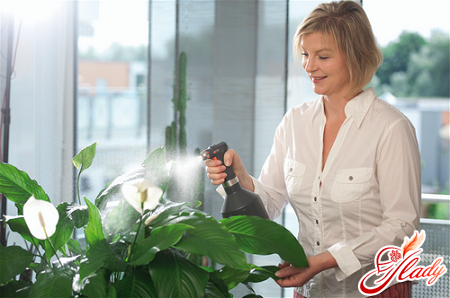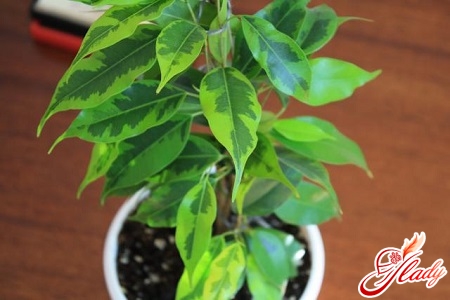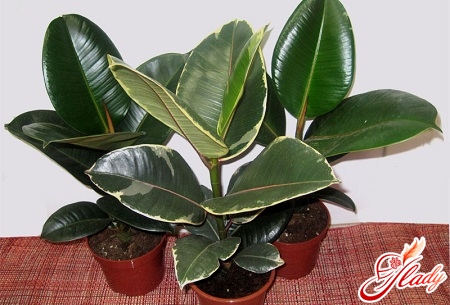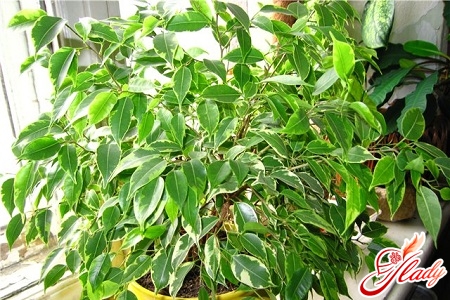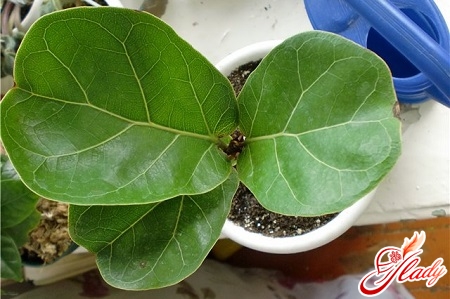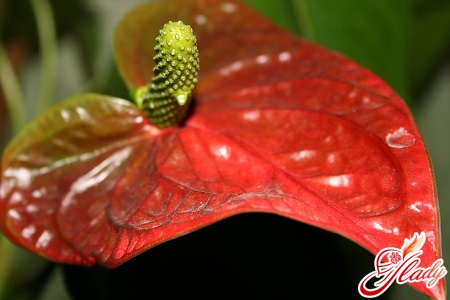 The flower of male happiness – that’s the popular sayingthe name of an overseas tropical flower that arouses admiration for its exotic beauty. If you have become the owner of this plant, learn all the secrets of successful care for it so that it pleases you with its blooming appearance for as long as possible. This is quite achievable. For example, one of the varieties of Anthurium, bred for keeping at home - Anthuriumandraeanum Lindenex Andre - with proper care can bloom all year round.
The flower of male happiness – that’s the popular sayingthe name of an overseas tropical flower that arouses admiration for its exotic beauty. If you have become the owner of this plant, learn all the secrets of successful care for it so that it pleases you with its blooming appearance for as long as possible. This is quite achievable. For example, one of the varieties of Anthurium, bred for keeping at home - Anthuriumandraeanum Lindenex Andre - with proper care can bloom all year round.
Choosing the right Anthurium before buying
The best time to buy a plant isthis is the period from the end of May to mid-autumn. The plant tolerates changes in maintenance conditions better and tolerates acclimatization more calmly, recovers faster from the stress of transplantation and change of residence. To choose an initially healthy plant, pay attention to the following points when buying Anthurium:
- Stems, leaves, flowers and buds of plants should look developed equally and harmoniously and proportionally
- Thoroughly inspect all the young foliage, and for larger leaves their underside for the absence of pests there
- The presence of a large number of unblown buds gives you a guarantee that you will enjoy the beauty of your Anthurium after a long time
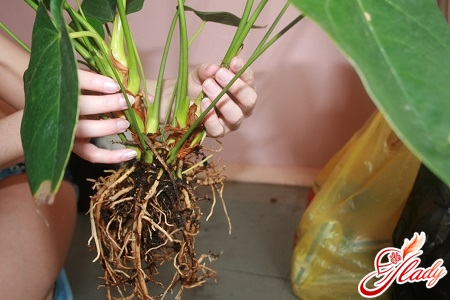
Is it light to you, Anthurium?
Any well-lit place, but without direct sunlightexposure of the plant to strong sunlight, is perfect for your flower. Anthurium is a shade-tolerant plant, so it can easily tolerate even very modest lighting, but it will not begin to bloom. The most suitable windows for a permanent place of residence for the plant will be windows on the western and north-western side, or on the eastern or north-eastern side. If you had to put Anthurium on the south side, make sure that the sun's rays do not have direct access to the plant. Proper lighting means a lot to the flower. Excess and deficiency equally negatively affect its appearance. If the plant receives too much light, it can slow down and even stop growing. The leaves become denser, and the petioles are shorter. The color of the leaves changes: from dark green they become brown, and light yellow leaves begin to turn yellow more strongly. The flowers also change color, losing its intensity. They become smaller in size and also begin to wither faster.
Content temperature
Anthurium is native to the tropics, which should be notedbe sure to remember, providing it with proper care. After all, the correct development of the plant's leaves and its excellent flowering will depend on the optimal temperature regime. In spring and summer, the flower needs high humidity and an air temperature around no lower than 20, and preferably 25 ° C. This is exactly how much the plant needs to form buds with their subsequent normal formation, development and flowering. With the onset of autumn, as well as in winter, watering should be reduced if the room temperature is lower. If you do not take care to reduce humidity when the temperature drops, then convex roundness of a yellow-green color may form on the leaves of the plant. This will significantly spoil the appearance of the Anthurium. In addition, when winter comes, make sure that its root system does not begin to rot. This can be provoked by hypothermia of the soil, when the windowsill on which the plant is located becomes too cold. It is quite easy to avoid this: just place the pot in which your Anthurium is located on a piece of plywood, thick cardboard or any other covering. It will become a barrier from the cold coming to the roots of the plant from the windowsill.
Ventilation and humidity
The air in the room where Anthurium lives,It is necessary to refresh and ventilate regularly. But do it in such a way that the plant does not suffer from drafts. In cold weather, the plant can be moved to another room for a while, while the windows in its "native" room are open. If you use a fan, heater or air conditioner, make sure that the air streams emitted by these devices do not hit the plant. Do not place the flower in close proximity to operating equipment. Remember that the use of these devices also affects the humidity level in the space. This is a very important indicator in the maintenance of Anthurium. The plant loves a humid climate. In summer, you can achieve the required humidity levels naturally, with the help of watering. With the onset of the heating season, the air in the rooms becomes dry due to the operation of batteries and other auxiliary heating devices. The plant begins to suffer greatly from lack of humidity, and most importantly, pests can begin to develop in it. To increase the humidity, you need to take the necessary measures. The pot with Anthurium can be placed on a tray with water, into which you need to pour pebbles or beautiful stones. In many interiors, decorative fountains are used - they also help to increase the humidity in the apartment.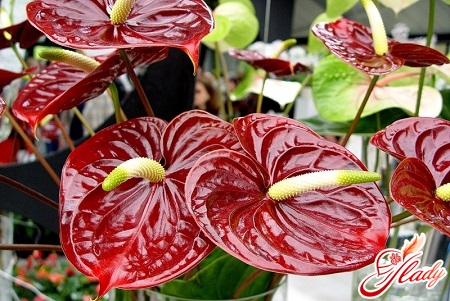
Reproduction and transplantation of Anturium
Now let's focus on transplantation and propagation.Anthurium. Loose soil is best for this plant. It has the ability to retain moisture and is breathable. The substrate most suitable for the flower is made from a mixture of leaf soil and peat. They should be taken in equal quantities. It is also recommended to add a little sand and a few pieces of tree bark. It is important to put a good layer of drainage in the planting container so that water does not accumulate and stagnate in the substrate. Anthurium does not grow very quickly, so it does not need to be replanted too often. This happens once every three to four years. The roots of the plant are very fragile, so you need to carefully remove the flower from the old container and carefully place it in a new pot. The flower is quite successfully propagated by apical cuttings and stem shoots. If the root system on them is already quite well developed, then the stem shoots are simply separated from the parent stem and planted in a container of a suitable size. If the roots are not yet present or are not sufficiently developed, the babies are first rooted in sand. In this case, you need to cover the young Anthuriums with a transparent film from above. This is done in order to increase humidity. The apical cuttings are rooted in a similar way. The plant is propagated in the spring and summer months. Now you know all the secrets of successful maintenance, breeding and care of the bright and colorful Anthurium. As you can see, this flower does not require any special conditions and privileges - everything is within reason. But as a result of the efforts made, your home will have one more attractive plant. The variety of colors and the unusual shape of the flowers and leaves of the plant will certainly attract the admiring glances of guests in your home. And the Anthurium itself fits perfectly into a variety of interiors. We wish that "male happiness" is always present and grows in your home!




